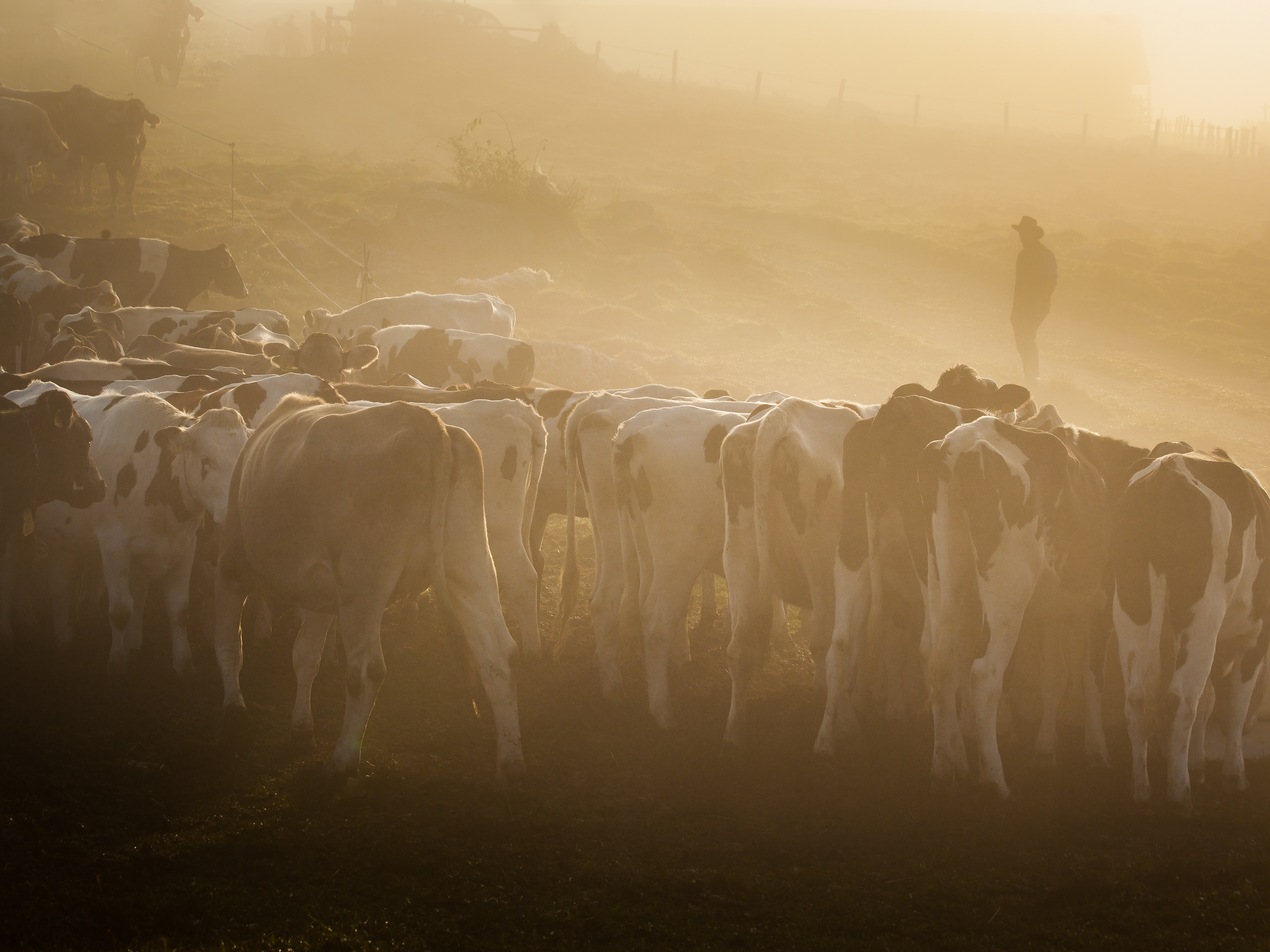One of the most well-known legends tells the tale of an ancient kingdom where the mountains were as dark and dismal as the Alps. The young prince had married the Moon King’s daughter – a kindhearted maiden of refined beauty who they feared would die of longing for the brilliant silver light of her home on the moon. The troubled prince was desperate and determined to save his beloved wife at all costs, so he made a deal with the salvàns – the wise primordial gnomes that know all of nature’s secrets: he would give their lineage everlasting shelter in the woods and mountains of his kingdom in exchange for a spell to cover the mountain peaks with a pale, lunar light that provided an adequate landscape for his princess. And so it was. The salvàns spun moon rays, wove a thick web of light and silver thread, and covered the entire realm with the soft, pale light of the moon in a single night. The ancient kingdom no longer exists. Nevertheless, the mysterious presence of the salvàns can still be felt today in the forests and mountain pastures, and the mountain summits shine with silvery-white moonlight: people call them “The Pale Mountains”.
Una delle leggende più conosciute racconta la storia di un antico regno dove le montagne erano buie e tetre come le Alpi. Il giovane principe aveva sposato la figlia del Re della Luna, una fanciulla di buon cuore e di raffinata bellezza che temevano sarebbe morta di desiderio per la brillante luce argentata della sua casa sulla luna. Il travagliato principe era disperato e determinato a salvare a tutti i costi la sua amata moglie, così strinse un patto con i salvàns – i saggi gnomi primordiali che conoscono tutti i segreti della natura: avrebbe dato alla loro stirpe rifugio eterno nei boschi e sulle montagne del suo regno. regno in cambio di un incantesimo per coprire le cime delle montagne con una pallida luce lunare che fornisse un paesaggio adeguato per la sua principessa. E così è stato. I salvàns filavano i raggi lunari, tessevano una fitta rete di luce e filo d'argento e ricoprivano l'intero regno con la tenue e pallida luce della luna in una sola notte. L'antico regno non esiste più. Tuttavia, la misteriosa presenza dei salvàn si avverte ancora oggi nei boschi e negli alpeggi, e le cime dei monti brillano di chiarore bianco-argenteo: la gente li chiama “I Monti Pallidi”.
I was born under the slopes of Mount Meru and her majestic neighbour Mount Kilimanjaro in Tanzania. I don’t know if this was where my love of mountains began in the sub conscious, but I remember the very first time I saw the Dolomites. It was during the summer of 1996 when I was at our family home in northern Italy with my then young twin boys on our summer holidays from South Africa. I remember driving up to these magnificent mountains, where the road in some areas goes through deep valleys alternating with open meadows. After a certain point the famous rocky peaks seemed to pay hide and seek through the pine forests along the winding road, and I could only wonder what lay beyond.
Sono nata sotto le pendici del Monte Meru e del suo maestoso vicino, il Monte Kilimanjaro, in Tanzania. Non so se è qui che nel subconscio è iniziato il mio amore per la montagna, ma ricordo la primissima volta che ho visto le Dolomiti. Era l'estate del 1996 quando ero nella nostra casa di famiglia nel nord Italia con i miei allora giovani gemelli durante le vacanze estive dal Sud Africa. Ricordo di aver guidato fino a queste magnifiche montagne, dove la strada in alcuni tratti attraversa valli profonde alternate a prati aperti. Dopo un certo punto le famose cime rocciose sembravano a giocare a nascondino tra le pinete lungo la strada tortuosa. Potevo solo chiedermi cosa ci fosse oltre.
“The Dolomites are widely regarded as being among the most attractive mountain landscapes in the world,” states UNESCO, and on June 26, 2009 they were inscribed into the UNESCO World Heritage List. Although there are many beautiful and iconic photographic possibilities throughout the Dolomites, for this blog I have chosen to showcase a particular part of these splendid mountains which I have got to know very well over the last few years. This particular area is called "Dolomiti Bellunesi" and falls in the Veneto region of Italy in the Province of Belluno.
My first visit to this area of the Dolomites was the world famous Passo Giau (Giau pass) where the panorama that opens up is nothing less than spectacular. A very predominant mountain range called Nuvolau (2,574 m) stands up proud with immense rock faces from the centre of this vast mountain pasture and is the mecca for many photographers. Nuvolau takes your breath away, and looking at the peak on a clear day, one can see Rifugio Nuvolau, the oldest mountain refuge in the Dolomites, which was built in 1883.
“Le Dolomiti sono considerate da molti tra i paesaggi montani più belli del mondo”, afferma l’UNESCO, e il 26 giugno 2009 sono state iscritte nella Lista del Patrimonio Mondiale dell’UNESCO. Sebbene ci siano molte possibilità fotografiche belle e iconiche in tutte le Dolomiti, ma per questo blog ho scelto di mostrare una parte particolare di queste splendide montagne che ho avuto modo di conoscere molto bene negli ultimi anni. Si chiamano "Dolomiti Bellunesi" e ricadano nella regione Veneto dell'Italia.
La mia prima visita in questa zona delle Dolomiti è stata al famosissimo Passo Giau dove il panorama che si apre è a dir poco spettacolare. Al centro di questo vasto alpeggio si erge orgoglioso con immense pareti rocciose il massiccio montuoso del Nuvolau (2.574 m) che rappresenta la mecca di molti fotografi. Il Nuvolau toglie il fiato e, guardando la vetta nelle giornate limpide, si può vedere il Rifugio Nuvolau, il più antico rifugio delle Dolomiti, costruito nel 1883.


Hidden behind Mount Nuvolau are the famous Cinque Torri (5 Towers) which are a small mountain range belonging to the Nuvolau group. They are fabulous to photograph in all the seasons and are maybe the most iconic group of rocks in the Belluno Dolomites. I love visiting during the autumn months when the abundant forests of Larch trees colour the whole area in a brilliant orange and is a very good location to photograph both at sunrise and sunset.
Nascoste dietro il Monte Nuvolau si trovano le famose Cinque Torri, una piccola catena montuosa appartenente al gruppo del Nuvolau. Sono favolosi da fotografare in tutte le stagioni e sono forse il gruppo di rocce più iconico delle Dolomiti Bellunesi. Adoro visitarla durante i mesi autunnali quando le abbondanti foreste di larici colorano l'intera zona di un arancione brillante ed è un'ottima posizione per fotografare sia all'alba che al tramonto.
Perhaps my favourite location of all, and only recently visited is the little biotope lake called Lago delle Baste. Given its position and size, it is subject during the different seasons to how much water is present in the lake and obviously depending on the abundance of rains and the climate.
The hike to this lake starts off from Passo Giau and is not too difficult until the last part which is very steep and strenuous. I was laden with all my camera equipment and because a group of fellow photographers and I decided to wild camp there for the night I was also carrying my camping equipment. We set up our small, tented camp near the lake where the unmistakable and stunning profile of Mount Pelmo, the king of the Dolomites was clearly visible in the background.
(see above photo)
Forse il mio location preferito in assoluto, e visitato solo di recente, è il piccolo lago biotopo chiamato Lago delle Baste. Data la sua posizione e dimensione è soggetto nelle diverse stagioni alla quantità di acqua presente nel lago e ovviamente all'abbondanza delle piogge e al clima.
L'escursione a questo lago inizia dal Passo Giau e non presenta particolari difficoltà fino all'ultimo tratto che è molto ripido e faticoso. Ero carico di tutta la mia attrezzatura fotografica e poiché io e un gruppo di altri fotografi abbiamo deciso di dormire lì per la notte, trasportavo anche la mia attrezzatura e tenda. Ho allestito la mia piccola tenda vicino al lago dove sullo sfondo era ben visibile il profilo inconfondibile e mozzafiato del Monte Pelmo, il re delle Dolomiti.



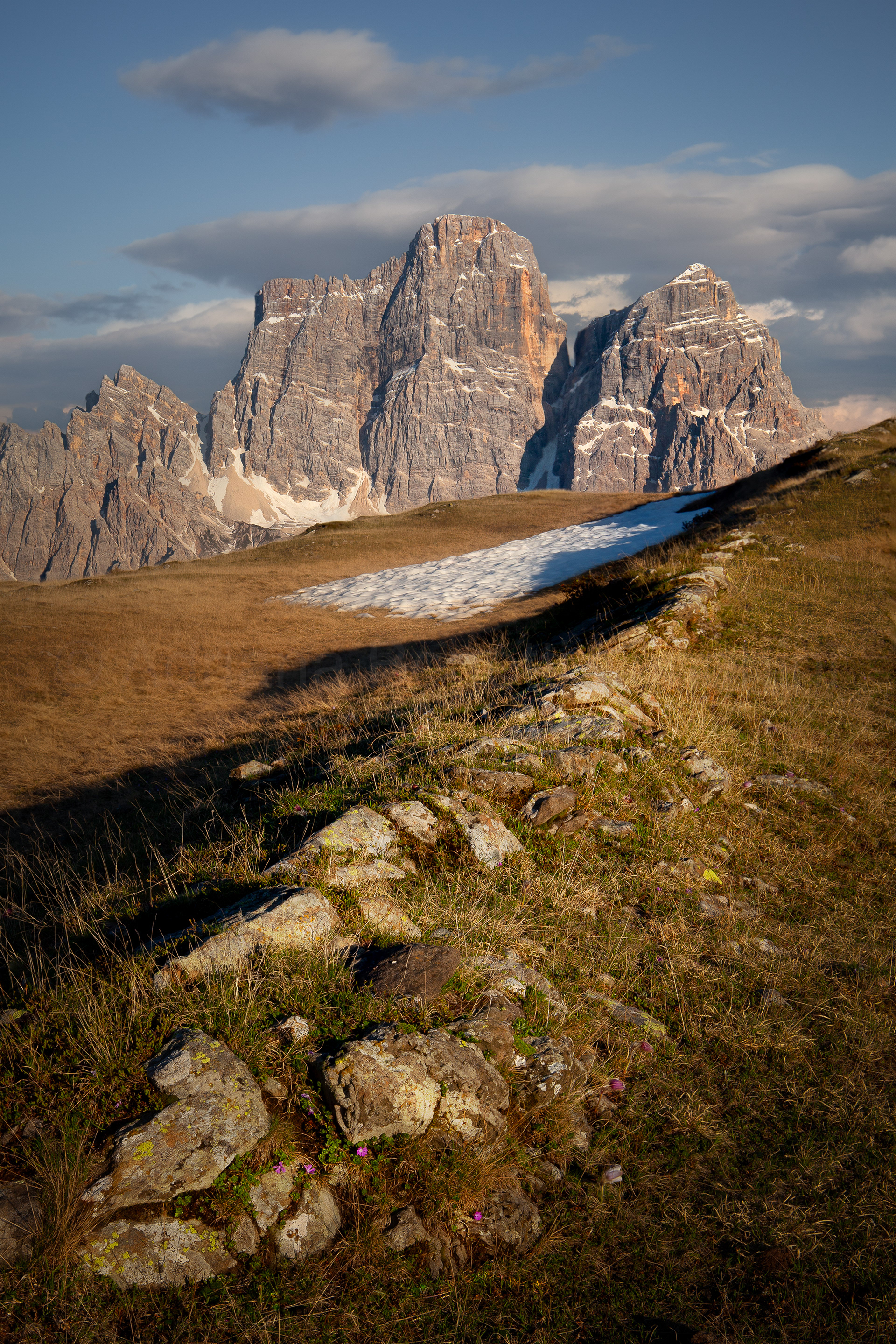
The small size of the pond is not misleading, in fact it represents a respectable biotope and, more generally a precious and fundamental element of the landscape. The marshy environment is unique in the area and the stretch of water gives back the magical image of the surrounding mountains, in particular the reflection of Monte Pelmo in its waters. Overcoming the tiring climb that leads to the panoramic saddle and looking down the valley is "Flintstone city" which is the name that I have given to the labyrinths of enormous boulders at the foot of the Lastoi de Formin, the immense panorama gives way to amazing views of the Mondeval meadows and pastures of Mondeval, a place frequented since prehistoric times, in the Pelmo-Mondeval regional nature reserve.
Le ridotte dimensioni dello stagno non traggano in inganno, esso infatti rappresenta un biotopo di tutto rispetto e, più in generale un elemento prezioso e fondamentale del paesaggio. L'ambiente palustre è unico nella zona e lo specchio d'acqua restituisce l'immagine magica delle montagne circostanti, in particolare il riflesso del Monte Pelmo nelle sue acque. Superata la faticosa salita che porta alla sella panoramica e guardando a valle si trova "città Flintstone" che è il nome che ho dato ai labirinti di enormi massi ai piedi dei Lastoi de Formin, l'immenso panorama lascia il posto a stupefacenti vedute dei prati e dei pascoli di Mondeval, luogo frequentato fin dalla preistoria, nel Parco naturale regionale Pelmo-Mondeval.
A short walk eventually leads to the large boulder where the tomb of the Man of Mondeval and the burial site of this Mesolithic hunter with all his funerary equipment was found. It was an exceptional discovery, due to the observations and intuition of an enthusiast, Vittorino Cazzetta, to whom the museum of Selva di Cadore is named today.
Una breve passeggiata conduce infine al grande masso dove è stata ritrovata la tomba dell'Uomo di Mondeval e il luogo di sepoltura di questo cacciatore mesolitico con tutto il suo corredo funerario. Fu una scoperta eccezionale, dovuta alle osservazioni e all'intuizione di un appassionato, Vittorino Cazzetta, a cui oggi è intitolato il museo di Selva di Cadore.
Anyone that are interested in hiking to this small lake should have a good level of fitness, good hiking boots, walking sticks and a lightweight backpack with essentials such as water and a light snack. For those that are not experienced with mountain hiking, I do not recommend returning to the car park at Passo Giau after the sun has gone down.
Chiunque sia interessato a fare un'escursione in questo laghetto dovrebbe avere un buon livello di forma fisica, scarpe adatte alla montagna, bastoncini da passeggio e uno zaino leggero con gli elementi essenziali come acqua e uno spuntino leggero. Per chi non è esperto di escursioni in montagna sconsiglio di rientrare al parcheggio del Passo Giau primate tramonta il sole.
Below a few additional photos from the Belluno Dolomites!


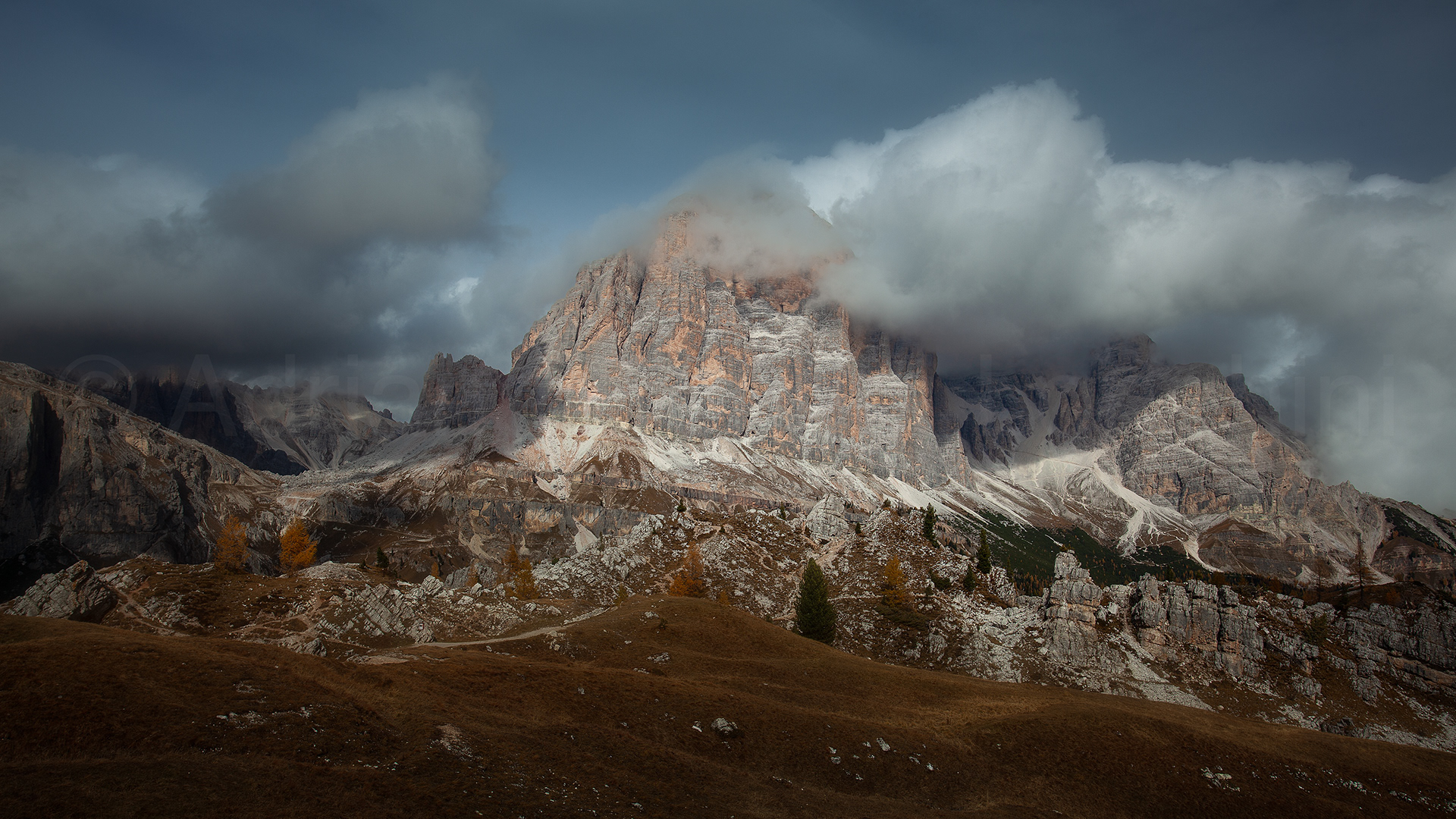


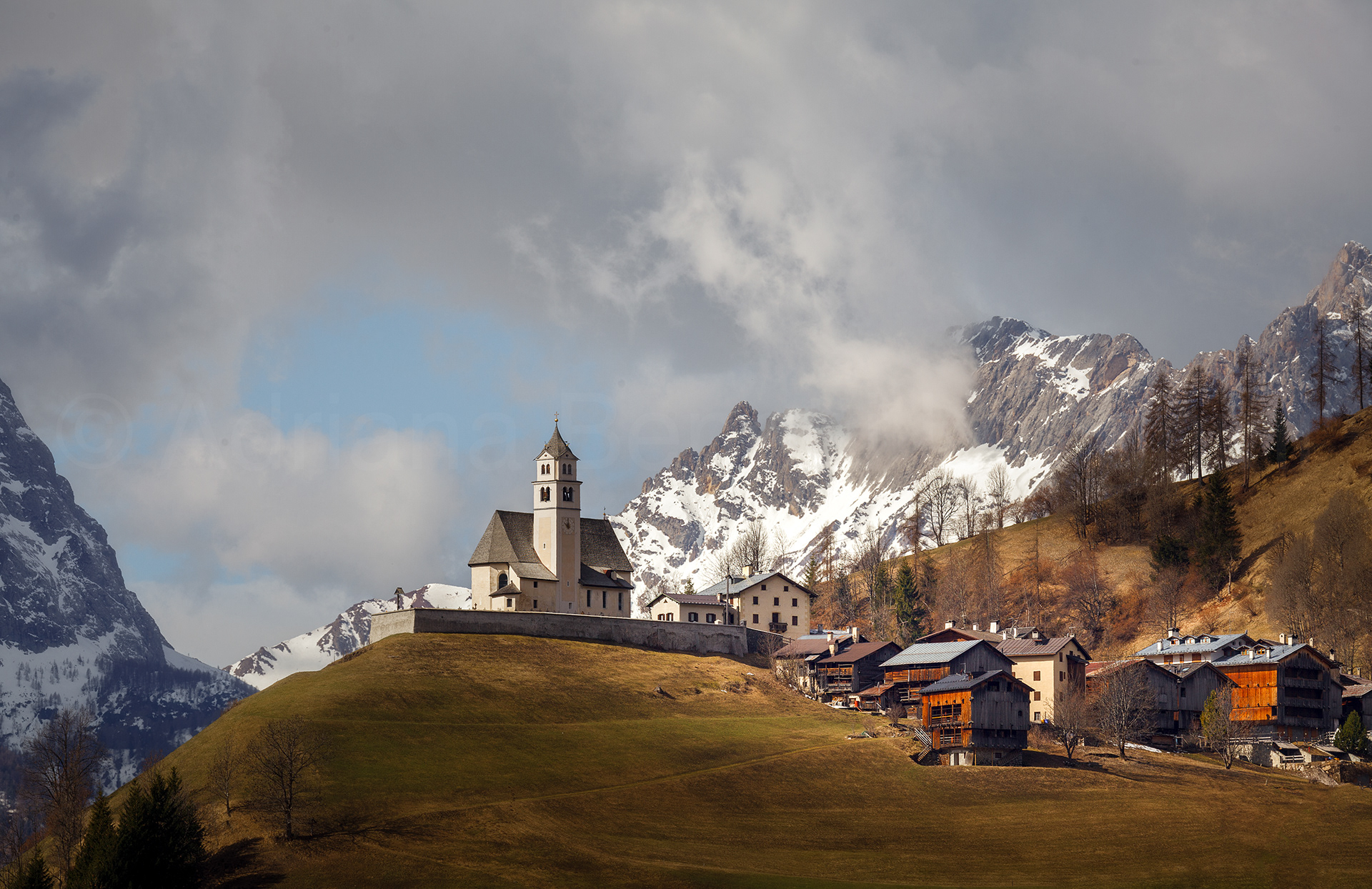



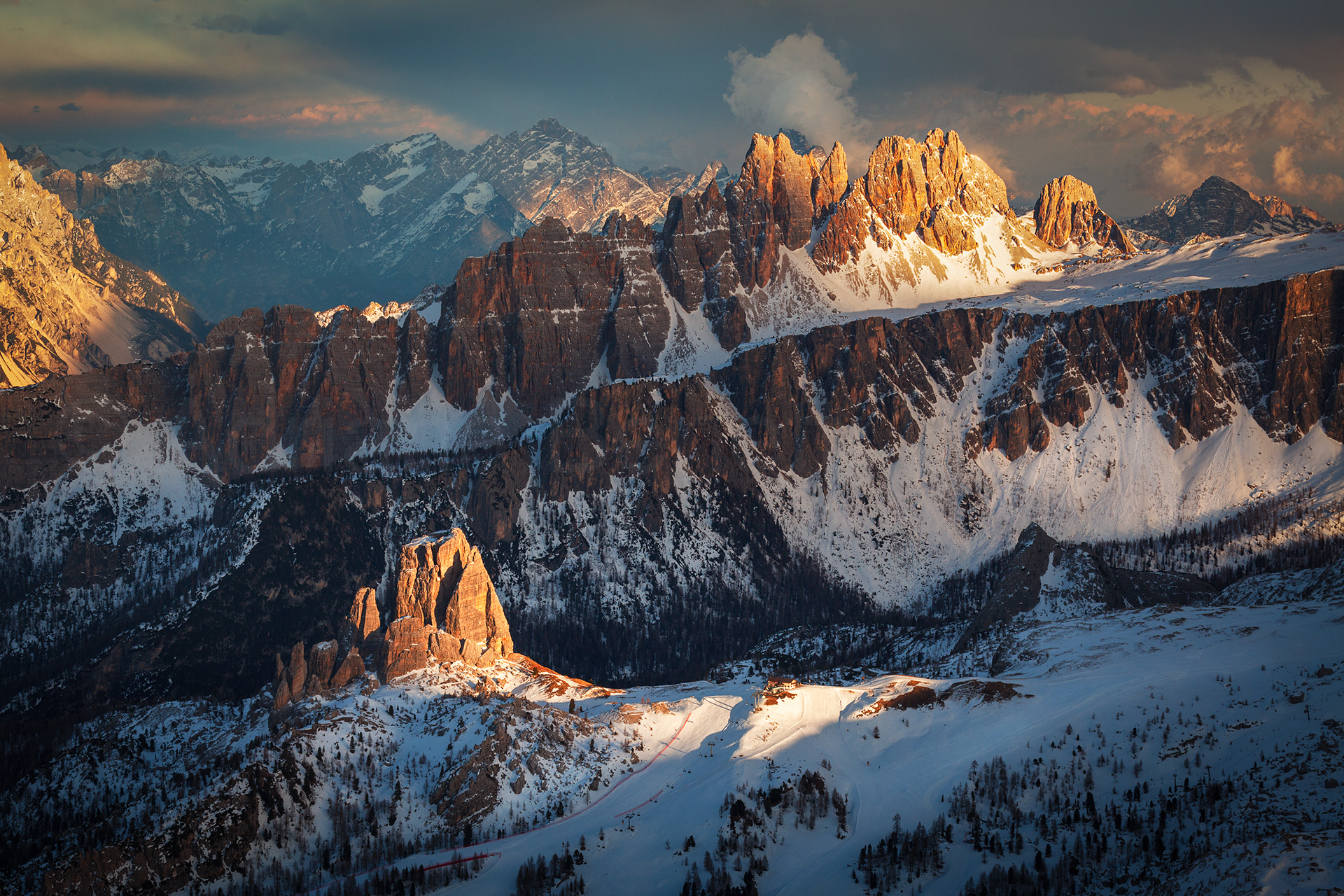

Until the next one, thank you for reading my blog!
© ADRIANA BENETTI LONGHINI (All rights reserved)
The photographs contained on this, and any other site under the adrianabenettilonghini.com domain, are the property of Adriana Benetti Longhini and are protected by International copyright laws. All copyright, trademark, and other intellectual property rights in this site, are the property of Adriana Benetti Longhini.
All Photographs on www.adrianabenettilonghini.com are copyrighted.



